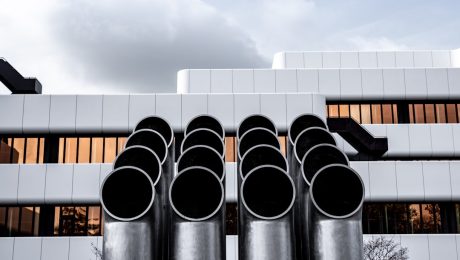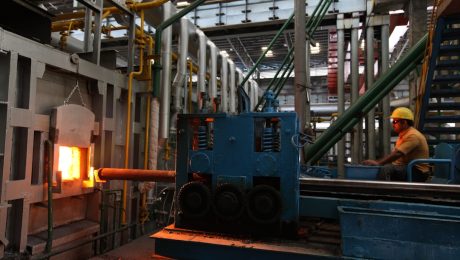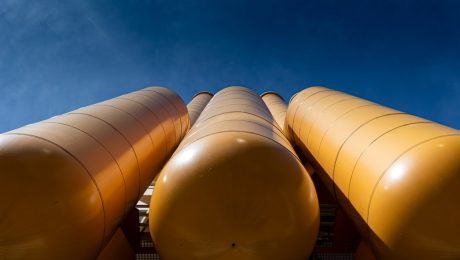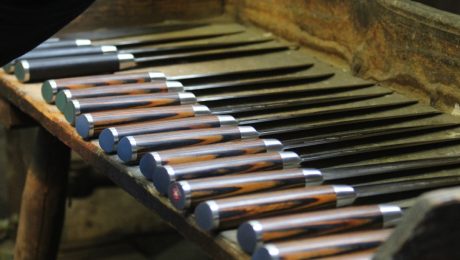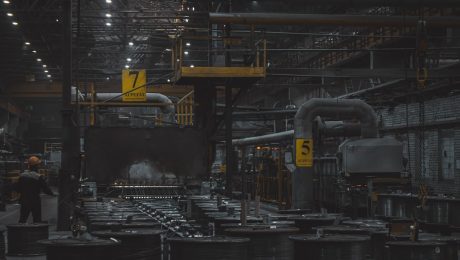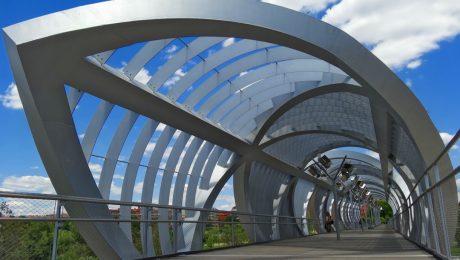body {
font-family: sans-serif;
line-height: 1.6;
}
h1, h2, h3 {
color: #333;
}
Cogeneration systems, also known as combined heat and power (CHP) systems, are marvels of energy efficiency, producing both electricity and usable heat from a single fuel source. While the intricate engineering and sophisticated controls often take center stage, a less glamorous but equally critical component ensures the system’s longevity and performance: steel. This post delves into the vital role of steel in cogeneration systems, exploring its selection, properties, and challenges.
1. Steel Grades for Cogeneration: A Material Selection Guide
The choice of steel for cogeneration components is far from arbitrary. It depends heavily on the specific application, operating temperature, and the presence of corrosive agents. Common steel grades used include:
- Carbon Steel: While cost-effective, carbon steel’s suitability is limited to lower-temperature applications and environments with minimal corrosion risks. Its strength and weldability make it suitable for certain structural components.
- Low Alloy Steels: These steels offer improved strength and corrosion resistance compared to carbon steel, making them suitable for a wider range of cogeneration applications. Elements like chromium, molybdenum, and nickel enhance their performance.
- Stainless Steels: For high-temperature and corrosive environments, particularly those involving steam and combustion byproducts, stainless steels are indispensable. Austenitic stainless steels (like 304 and 316) are popular due to their excellent corrosion resistance and high-temperature strength. Ferritic and martensitic stainless steels offer even greater strength but may have limitations in weldability.
- Heat-Resistant Steels: In high-temperature sections like boiler tubes and pressure vessels, heat-resistant steels are crucial. These alloys are engineered to withstand creep, oxidation, and scaling at elevated temperatures, ensuring the system’s structural integrity.
Selecting the appropriate steel grade requires careful consideration of the system’s operating parameters and potential environmental factors. Consultations with materials engineers are often necessary to optimize performance and longevity.
2. Corrosion Resistance: Protecting the Heart of Cogeneration
Cogeneration systems operate in harsh environments. Exposure to steam, combustion gases, and potentially aggressive chemicals necessitates the use of corrosion-resistant steels. Corrosion can lead to leaks, reduced efficiency, and even catastrophic failures. The selection of steel grades with inherent corrosion resistance, or the application of protective coatings, is vital.
Stainless steels, especially those containing chromium and molybdenum, form a passive oxide layer that protects against corrosion. However, the effectiveness of this layer can be compromised by certain environmental conditions, such as high chloride concentrations. In such cases, more specialized alloys or protective coatings may be required.
Regular inspections and maintenance are crucial to detect and address corrosion early on. This includes visual inspections, non-destructive testing (NDT) techniques, and potentially chemical analysis of the system’s fluids.
3. High-Temperature Properties: Withstanding the Heat
Many components within a cogeneration system operate at elevated temperatures, often exceeding several hundred degrees Celsius. At these temperatures, steel undergoes changes in its mechanical properties, including reduced strength and increased creep (slow deformation under sustained stress). Therefore, the selection of steel must prioritize high-temperature strength and creep resistance.
Heat-resistant steels, specifically designed for high-temperature applications, are crucial for components like boiler tubes, superheaters, and headers. These steels often contain elements like chromium, molybdenum, vanadium, and tungsten, which enhance their high-temperature strength and oxidation resistance. Careful consideration must be given to the specific temperature range and the expected stresses on the components.
4. Weldability and Fabrication: Building a Robust System
Cogeneration systems are complex assemblies requiring extensive welding and fabrication. The chosen steel grade must exhibit good weldability to ensure the integrity of the welds. Poor weldability can lead to defects, weakening the system and potentially causing failures. The selection process often involves considering the weldability of the chosen steel grade, the welding processes to be employed, and the necessary post-weld heat treatments.
For stainless steels, specialized welding techniques and filler materials are often required to prevent weld decay and maintain corrosion resistance. Proper welding procedures, qualified welders, and rigorous quality control are essential to ensure the reliability and safety of the cogeneration system.
5. Cost and Lifecycle Considerations: Balancing Performance and Economics
While the performance and longevity of the steel components are paramount, cost considerations are also important. The initial cost of the steel, along with the fabrication and installation costs, must be balanced against the potential long-term benefits of using a higher-grade, more durable material. A lifecycle cost analysis, considering maintenance, repairs, and potential downtime, can help optimize the selection process.
Choosing a higher-grade steel might result in a higher initial investment, but it could lead to significant cost savings over the system’s lifespan due to reduced maintenance and longer operational life. This analysis should also account for the energy efficiency gains associated with a well-designed and robust cogeneration system.
In conclusion, the selection of steel for cogeneration systems is a critical decision impacting the system’s efficiency, safety, and longevity. A thorough understanding of the operating conditions, the properties of different steel grades, and the economic considerations is essential for making informed decisions. Consulting with materials engineers and experienced cogeneration system designers is highly recommended to ensure optimal performance and minimize risks.
Tags: cogeneration steel, cogeneration systems, steel grades, corrosion resistance steel, heat resistant steel, combined heat and power, CHP steel
Choosing the right steel for your application can be crucial for success. Two of the most common types of stainless steel are ferritic and austenitic. While both offer corrosion resistance, their underlying structures lead to significant differences in properties and suitability for various applications. This comprehensive guide will delve into the key distinctions between ferritic and austenitic steel, helping you make informed decisions.
1. Crystal Structure: The Foundation of Their Differences
The fundamental difference between ferritic and austenitic stainless steel lies in their crystal structure. This seemingly microscopic detail profoundly impacts their macroscopic properties. Ferritic stainless steel possesses a body-centered cubic (BCC) crystal structure at room temperature. This structure is characterized by a relatively simple arrangement of atoms, with one atom at the center of a cube and one at each corner. Austenitic stainless steel, on the other hand, boasts a face-centered cubic (FCC) structure, where atoms are located at each corner and the center of each face of the cube. This FCC structure is more densely packed than the BCC structure, contributing to several key differences in their properties.
2. Mechanical Properties: Strength, Ductility, and Formability
The distinct crystal structures directly influence the mechanical properties of these steels. Ferritic stainless steels generally exhibit higher strength and hardness than austenitic grades, but they are less ductile and more brittle. This means they are less easily formed or bent without cracking. Their higher strength makes them suitable for applications requiring structural integrity. Austenitic stainless steels, with their FCC structure, are significantly more ductile and possess excellent formability. This allows them to be easily shaped, drawn, and deep-drawn into complex geometries. However, they generally have lower yield strength compared to ferritic grades.
3. Corrosion Resistance: A Key Feature of Stainless Steels
Both ferritic and austenitic stainless steels are known for their corrosion resistance, primarily due to the presence of chromium in their composition. However, the level and type of corrosion resistance differ. Ferritic stainless steels typically exhibit good resistance to oxidation and general corrosion, making them suitable for many outdoor applications. Their corrosion resistance, however, can be less robust in highly corrosive environments compared to austenitic grades. Austenitic stainless steels, particularly those containing molybdenum, offer superior corrosion resistance, including excellent resistance to pitting and crevice corrosion. This makes them ideal for applications involving harsh chemical environments, seawater, and high-temperature applications.
4. Weldability: Considerations for Joining
Weldability is another critical aspect to consider. Ferritic stainless steels can be welded, but they are more prone to cracking during welding due to their lower ductility and susceptibility to sensitization (formation of chromium carbides at grain boundaries, reducing corrosion resistance). Careful attention to welding procedures and pre- and post-weld heat treatments are often necessary. Austenitic stainless steels, due to their superior ductility, generally exhibit excellent weldability. However, they can be susceptible to sensitization if not properly welded, requiring appropriate techniques and materials selection.
5. Applications: Where Each Steel Shines
The distinct properties of ferritic and austenitic steels dictate their suitability for specific applications. Ferritic stainless steels find widespread use in automotive exhaust systems, appliances, architectural cladding, and chemical processing equipment where high strength and moderate corrosion resistance are needed. Their lower cost compared to austenitic grades also contributes to their popularity. Austenitic stainless steels, with their superior corrosion resistance and formability, are prevalent in chemical plants, food processing equipment, medical devices, and marine applications. They are also frequently used in cryogenic applications due to their good toughness at low temperatures.
In summary, the choice between ferritic and austenitic stainless steel hinges on a careful consideration of the specific application requirements. While both offer corrosion resistance, their differences in mechanical properties, weldability, and overall cost significantly impact their suitability for various tasks. Understanding these key differences empowers engineers and designers to select the optimal material for achieving the desired performance and longevity of their products.
SEO Tags:
- Ferritic Steel
- Austenitic Steel
- Stainless Steel Comparison
- Steel Properties
- Material Selection Guide
The steel industry, known for its complex pricing structures and demanding timelines, is undergoing a significant transformation thanks to the integration of Artificial Intelligence (AI). AI-assisted steel quoting tools are no longer a futuristic concept; they’re a reality, offering businesses a competitive edge through increased efficiency, accuracy, and profitability. This post delves into the multifaceted impact of AI on steel quoting, exploring its benefits, functionalities, and future implications.
1. Accelerating the Quoting Process with AI-Powered Speed
Traditionally, generating steel quotes involved a laborious manual process. Sales teams spent hours poring over spreadsheets, material databases, and price lists, often leading to delays and potential errors. AI-assisted tools streamline this process dramatically. By leveraging machine learning algorithms, these tools can instantly access and analyze vast datasets, including real-time market prices, inventory levels, and manufacturing costs. This allows for near-instantaneous quote generation, significantly reducing turnaround times and enabling businesses to respond quickly to customer inquiries. The speed advantage translates directly into improved customer satisfaction and the ability to secure more deals before competitors.
Furthermore, AI can automate many repetitive tasks associated with quoting, such as data entry and calculations. This frees up valuable time for sales representatives to focus on building relationships with clients and closing deals, ultimately boosting sales productivity and revenue.
2. Enhancing Accuracy and Reducing Errors in Steel Quoting
Human error is inevitable in any manual process, and steel quoting is no exception. Miscalculations, incorrect data entry, and oversight of crucial details can lead to inaccurate quotes, potentially resulting in lost profits or even contract disputes. AI-assisted tools mitigate this risk by automating calculations and minimizing the chance of human error. These tools are programmed with complex pricing formulas and industry-specific knowledge, ensuring consistent and accurate quote generation.
Moreover, AI can identify and flag potential inconsistencies or errors in the data used for quoting. This proactive error detection capability ensures that quotes are not only accurate but also reliable, building trust with clients and strengthening the reputation of the business.
3. Optimizing Pricing Strategies with AI-Driven Insights
AI-assisted steel quoting tools provide valuable insights into market trends and pricing dynamics. By analyzing historical data and current market conditions, these tools can help businesses optimize their pricing strategies to maximize profitability. They can identify patterns in customer behavior, predict demand fluctuations, and suggest optimal pricing adjustments based on various factors, such as material costs, lead times, and competitive landscape.
This data-driven approach to pricing enables businesses to remain competitive while ensuring healthy profit margins. It also allows for more dynamic pricing strategies, responding effectively to changing market conditions and maximizing revenue opportunities.
4. Integrating Seamlessly with Existing CRM and ERP Systems
Modern AI-assisted steel quoting tools are designed for seamless integration with existing Customer Relationship Management (CRM) and Enterprise Resource Planning (ERP) systems. This integration streamlines workflows and eliminates the need for manual data transfer between different platforms. Quotes generated by the AI tool are automatically updated in the CRM system, providing sales teams with a comprehensive view of customer interactions and deal progress.
Similarly, integration with ERP systems ensures that accurate inventory levels and manufacturing costs are factored into the quoting process, avoiding potential discrepancies and delays. This seamless integration enhances overall efficiency and reduces the risk of data inconsistencies.
5. The Future of AI in Steel Quoting: Advanced Capabilities and Predictions
The future of AI in steel quoting is bright, with ongoing advancements promising even greater efficiency and sophistication. Future iterations of these tools may incorporate features such as predictive analytics to forecast future demand and optimize inventory management. Advanced machine learning algorithms will enable more accurate pricing predictions and improved risk assessment.
Furthermore, the integration of AI with other emerging technologies, such as blockchain and the Internet of Things (IoT), could revolutionize the entire steel supply chain, providing greater transparency, traceability, and efficiency. The use of AI in steel quoting is not just about improving individual quotes; it’s about transforming the entire business process and creating a more agile, responsive, and profitable steel industry.
The adoption of AI-assisted steel quoting tools is no longer a luxury but a necessity for businesses aiming to thrive in today’s competitive landscape. By embracing this technology, steel companies can unlock significant improvements in efficiency, accuracy, and profitability, paving the way for sustained growth and success.
SEO Tags:
AI Steel Quoting, Steel Quotation Software, AI in Steel Industry, Automated Steel Quoting, Steel Pricing Software
Steel, a cornerstone of modern construction and manufacturing, demands precise and efficient cutting techniques. The choice of method depends heavily on factors such as material thickness, desired cut quality, production volume, and budget. This comprehensive guide explores the diverse world of steel cutting technologies, providing insights into their strengths and limitations.
1. Thermal Cutting: Harnessing Heat for Precise Separation
Thermal cutting methods utilize intense heat to melt and vaporize the steel, creating a cut. This category encompasses several popular techniques:
- Oxy-fuel cutting (OFC): This classic method uses a high-velocity jet of oxygen to burn the steel, requiring preheating to ignition temperature. It’s cost-effective for thick steel plates but leaves a relatively rough cut and is unsuitable for stainless steel or other reactive metals. The heat-affected zone (HAZ) can also be substantial.
- Plasma arc cutting (PAC): A constricted arc of plasma, an electrically conductive gas, melts and cuts the steel. PAC offers higher cutting speeds than OFC, a narrower kerf (cut width), and better quality for thicker materials. It’s versatile and applicable to various steel grades, including stainless steel.
- Laser cutting: A highly focused laser beam melts and vaporizes the steel, providing exceptional accuracy and precision. Laser cutting is ideal for intricate designs and thin-to-medium thickness steel sheets. The clean cuts minimize post-processing needs, and it can handle various materials.
2. Mechanical Cutting: Precise Power Without the Heat
Mechanical cutting methods rely on physical force to sever the steel. These techniques offer different advantages depending on the application:
- Shearing: A powerful press uses blades to shear the steel, creating a relatively clean cut, particularly effective for thin sheets. It’s a fast and efficient method for mass production but is limited by material thickness and requires specialized machinery.
- Sawing: Using abrasive or toothed blades, sawing is versatile and can handle various thicknesses and steel grades. Band saws offer smooth cuts, while abrasive saws are more aggressive and suitable for tougher materials. However, sawing can be slower than other methods.
- Abrasive waterjet cutting (AWJ): This method uses a high-pressure jet of water mixed with an abrasive material to cut through steel. AWJ is highly versatile, capable of cutting almost any material with minimal heat-affected zone, making it ideal for intricate shapes and delicate parts. It’s slower than thermal methods but offers superior precision.
3. Abrasive Cutting: Utilizing Friction and Grit
Abrasive cutting employs abrasive materials to wear away the steel, producing a cut. The most common method is:
- Abrasive wheel cutting: Utilizing rotating wheels coated with abrasive materials, this technique is effective for various steel types and thicknesses. It’s versatile but can generate considerable heat and require significant post-processing depending on the desired finish.
4. Choosing the Right Steel Cutting Technology: A Practical Guide
Selecting the appropriate steel cutting technology necessitates careful consideration of several factors:
- Material thickness: Thicker materials often require thermal or mechanical methods, while thinner materials are amenable to shearing or laser cutting.
- Desired cut quality: Laser cutting and abrasive waterjet cutting offer superior precision, while oxy-fuel cutting produces a rougher cut.
- Production volume: High-volume production favors faster methods like shearing or plasma cutting, while lower-volume projects might benefit from the precision of laser cutting.
- Material type: Certain methods are better suited to specific steel grades. For instance, stainless steel is often cut using plasma or laser cutting to avoid oxidation.
- Budgetary constraints: Some methods, like laser cutting, are more expensive than others, such as oxy-fuel cutting.
5. Safety Considerations in Steel Cutting
Steel cutting operations necessitate stringent safety protocols to protect workers from potential hazards. These include:
- Eye protection: Sparks, molten metal, and high-velocity particles require appropriate eye protection.
- Hearing protection: Many steel cutting processes are noisy and require hearing protection.
- Respiratory protection: Fumes and dust generated during cutting necessitate respiratory protection, especially in enclosed spaces.
- Proper ventilation: Adequate ventilation is crucial to remove harmful fumes and dust.
- Personal protective equipment (PPE): Appropriate PPE, including gloves, safety shoes, and flame-resistant clothing, should be worn at all times.
- Machine guarding: Machines should be properly guarded to prevent accidental contact.
Understanding the nuances of each steel cutting technology enables manufacturers and engineers to optimize their processes, ensuring efficient, precise, and safe operations. The right choice depends on a careful evaluation of the project’s specific requirements.
Tags: steel cutting, steel cutting methods, thermal cutting, mechanical cutting, abrasive cutting, laser cutting, plasma cutting
body { font-family: sans-serif; line-height: 1.6; }
h1, h2, h3 { color: #333; }
img { max-width: 100%; height: auto; }
Waste heat recovery (WHR) is a crucial aspect of sustainable industrial practices, offering significant energy savings and environmental benefits. While the overall system design is paramount, the often-overlooked component that plays a vital role in the success of any WHR project is the piping system. Pipes are the circulatory system of WHR, transporting the captured heat energy to where it can be effectively utilized. This post delves into the critical considerations involved in selecting, designing, and implementing piping systems for optimal waste heat recovery.
1. Material Selection: Choosing the Right Pipe for the Job
The choice of pipe material is paramount, heavily influenced by the temperature and chemical composition of the waste heat stream. Several factors must be considered:
- Temperature Resistance: High-temperature applications may necessitate materials like stainless steel (304, 316L, or even higher alloys), Inconel, or Hastelloy, which can withstand extreme heat without degrading. Lower-temperature applications might utilize carbon steel or even high-density polyethylene (HDPE) pipes.
- Corrosion Resistance: The chemical nature of the waste heat stream is critical. If the fluid is corrosive, materials resistant to the specific chemicals are essential. Stainless steels offer good corrosion resistance in many scenarios, while other materials like titanium or specialized alloys may be necessary for particularly aggressive environments.
- Pressure Rating: Pipes must withstand the operating pressure of the system. Higher pressures necessitate thicker pipe walls or the use of higher-pressure-rated materials. Accurate pressure calculations are crucial for safety and system integrity.
- Thermal Conductivity: For efficient heat transfer, materials with high thermal conductivity are preferred. However, this needs to be balanced against other factors like cost and corrosion resistance.
- Cost and Availability: While performance is key, the cost and availability of materials are also crucial considerations. A balance between performance and cost-effectiveness is often necessary.
2. Pipe Design and Insulation: Minimizing Heat Loss
Minimizing heat loss during transportation is crucial for maximizing WHR efficiency. Careful pipe design and insulation are essential:
- Pipe Diameter and Length: Careful calculations are needed to determine the optimal pipe diameter to balance pressure drop and heat loss. Longer pipe runs increase the surface area exposed to heat loss, necessitating thicker insulation.
- Insulation Material: Insulation materials like fiberglass, calcium silicate, or polyurethane foam are commonly used to minimize heat loss. The choice depends on temperature, cost, and environmental considerations. The thickness of the insulation layer is directly related to the heat loss reduction.
- Insulation Installation: Proper installation of insulation is crucial to prevent gaps and ensure continuous thermal protection. Any gaps can significantly reduce the effectiveness of the insulation.
- Pipe Supports and Clamps: Proper pipe support is essential to prevent sagging and stress on the pipes, which can lead to leaks and premature failure. Supports should be designed to minimize heat loss and allow for thermal expansion and contraction.
3. Pipe Fittings and Valves: Maintaining System Integrity
Pipe fittings and valves are essential components of any piping system. Their selection impacts both efficiency and safety:
- Material Compatibility: Fittings and valves should be made of materials compatible with both the pipe material and the fluid being transported, ensuring corrosion resistance and longevity.
- Pressure Rating: Fittings and valves must be rated for the system’s operating pressure to prevent leaks or failures.
- Flow Control: Valves are used to control and regulate the flow of the heat transfer fluid. Proper valve selection ensures efficient operation and prevents damage to the system.
- Leak Prevention: Proper sealing and installation of fittings and valves are crucial to prevent leaks, which can lead to energy loss and safety hazards.
4. Expansion Joints and Thermal Considerations: Accounting for Temperature Fluctuations
Temperature changes cause pipes to expand and contract. This needs to be accounted for in the design to prevent stress and potential failure:
- Expansion Joints: Expansion joints are incorporated into the piping system to accommodate thermal expansion and contraction, preventing stress on the pipes and fittings.
- Anchoring and Supports: Proper anchoring and support of the piping system are crucial to prevent movement and stress due to thermal expansion and contraction.
- Thermal Stress Analysis: A thermal stress analysis should be conducted to ensure that the piping system can withstand the expected temperature fluctuations without exceeding its design limits.
5. Monitoring and Maintenance: Ensuring Long-Term Performance
Regular monitoring and maintenance are crucial for the long-term performance and safety of the WHR piping system:
- Temperature Monitoring: Continuous monitoring of pipe temperatures helps identify potential problems like insulation failure or leaks.
- Pressure Monitoring: Regular pressure checks help detect leaks or blockages in the system.
- Visual Inspections: Regular visual inspections of the piping system can identify corrosion, damage, or other issues.
- Preventive Maintenance: A proactive maintenance schedule helps prevent problems before they occur, maximizing the lifespan of the piping system and minimizing downtime.
In conclusion, the piping system is a critical component of any successful waste heat recovery project. Careful consideration of material selection, design, insulation, fittings, expansion joints, and maintenance is essential for maximizing efficiency, safety, and the overall lifespan of the system. By understanding these key aspects, industries can effectively harness wasted energy and contribute to a more sustainable future.
SEO Tags: Waste Heat Recovery, WHR Piping, Industrial Piping, Heat Transfer Pipes, Pipe Insulation
The world runs on steel. From the smallest screws to the largest machinery, steel components are the backbone of countless industries. Original Equipment Manufacturers (OEMs) rely heavily on the consistent supply of high-quality steel parts to build their products. This post delves into the intricate process of OEM steel component production, examining the key stages, challenges, and future trends shaping this vital sector.
1. The Raw Materials: Selecting the Right Steel Grade
The journey of an OEM steel component begins with the selection of appropriate raw materials. The choice of steel grade is paramount and depends entirely on the intended application. Factors to consider include: required strength (yield strength, tensile strength), ductility (ability to deform before fracture), hardness, corrosion resistance, weldability, and machinability. Common steel grades used in OEM production include:
- Low Carbon Steel: Excellent for applications requiring formability and weldability, often used in automotive body panels and appliances.
- Medium Carbon Steel: Offers a balance of strength and ductility, suitable for gears, shafts, and other mechanically stressed components.
- High Carbon Steel: Known for its high strength and hardness, ideal for tools, springs, and high-stress applications.
- Alloy Steels: Contain alloying elements like chromium, nickel, and molybdenum to enhance specific properties such as corrosion resistance (stainless steel) or high-temperature strength.
- Tool Steels: Designed for high wear resistance and are used in cutting tools, dies, and molds.
The sourcing of raw materials is also critical. OEMs often work with reputable steel suppliers who can guarantee consistent quality and traceability throughout the supply chain. This ensures the final product meets the stringent requirements of the OEM.
2. Manufacturing Processes: Shaping the Steel
Once the steel grade is selected, various manufacturing processes are employed to shape the raw material into the desired component. These processes can be broadly categorized into:
- Casting: Molten steel is poured into a mold to create the basic shape. This method is cost-effective for complex shapes but may require further machining.
- Forging: Steel is heated and shaped using hammers or presses. Forging produces high strength and integrity, ideal for critical components.
- Rolling: Steel is passed through rollers to reduce its thickness and create sheets, plates, or bars. This is a common method for mass production.
- Machining: Precisely removing material from a workpiece using cutting tools to achieve the final dimensions and tolerances. This is essential for achieving tight specifications.
- Welding: Joining multiple steel pieces together, often used in creating larger or more complex assemblies.
- Powder Metallurgy: Steel powder is compacted and sintered to create complex shapes with high precision.
The selection of the manufacturing process depends on factors such as the component’s geometry, required tolerances, material properties, and production volume.
3. Quality Control: Ensuring Excellence
Rigorous quality control is paramount throughout the OEM steel component production process. This involves multiple checks at each stage to ensure the final product meets the required specifications and quality standards. Key aspects of quality control include:
- Incoming Material Inspection: Verifying the chemical composition and mechanical properties of the raw steel.
- In-Process Inspection: Monitoring the manufacturing process to identify and correct any deviations from specifications.
- Non-Destructive Testing (NDT): Techniques like ultrasonic testing, radiographic testing, and magnetic particle inspection are used to detect internal flaws without damaging the component.
- Dimensional Inspection: Precisely measuring the component’s dimensions to ensure they meet the required tolerances.
- Mechanical Testing: Evaluating the component’s strength, hardness, and other mechanical properties.
- Statistical Process Control (SPC): Using statistical methods to monitor and control the manufacturing process and identify potential problems.
Maintaining high quality standards is crucial for ensuring the reliability and safety of the final product and avoiding costly recalls or failures.
4. Surface Treatments: Enhancing Performance and Aesthetics
Many OEM steel components undergo surface treatments to enhance their performance, durability, or appearance. Common surface treatments include:
- Painting: Provides corrosion protection and aesthetic appeal.
- Powder Coating: A durable and environmentally friendly coating option.
- Galvanizing: A zinc coating that provides excellent corrosion resistance.
- Electroplating: Applying a thin layer of metal, such as chrome or nickel, for improved wear resistance, corrosion resistance, or aesthetics.
- Heat Treatment: Modifying the steel’s microstructure to improve its properties, such as hardness or toughness.
The choice of surface treatment depends on the specific requirements of the application and the desired properties of the finished component.
5. The Future of OEM Steel Component Production: Sustainability and Automation
The future of OEM steel component production is shaped by two major trends: sustainability and automation. The industry is increasingly focused on reducing its environmental impact through initiatives such as:
- Recycling: Increasing the use of recycled steel in production.
- Energy Efficiency: Improving the energy efficiency of manufacturing processes.
- Waste Reduction: Minimizing waste generation throughout the production process.
- Sustainable Sourcing: Sourcing raw materials from responsible and sustainable suppliers.
Automation is also playing a crucial role in improving efficiency, productivity, and quality. Advanced technologies such as robotics, AI, and machine learning are being implemented to automate various aspects of the production process, leading to increased precision, reduced labor costs, and improved overall efficiency.
The OEM steel component production industry is a complex and dynamic sector, constantly evolving to meet the demands of a rapidly changing world. By understanding the key processes, challenges, and future trends, we can appreciate the crucial role it plays in supporting countless industries and shaping the future of manufacturing.
Tags: OEM steel components, steel component manufacturing, steel production, metal fabrication, automotive steel parts
Cold drawn round steel bars are a cornerstone of countless industries, providing exceptional strength, precision, and durability. Understanding their properties and applications is crucial for engineers, manufacturers, and anyone working with high-quality steel components. This comprehensive guide will delve into the intricacies of cold drawn round steel bars, exploring their manufacturing process, characteristics, and diverse applications.
The Cold Drawing Process: Shaping Steel with Precision
Unlike hot-rolled steel bars, which are shaped at high temperatures, cold drawing involves pulling a pre-heated steel bar through a series of dies at room temperature. This process significantly alters the steel’s microstructure, resulting in improved mechanical properties. The reduction in cross-sectional area during drawing increases the tensile strength, yield strength, and surface finish. The process also enhances dimensional accuracy, making cold drawn bars ideal for applications requiring precise tolerances. Lubricants are crucial during the drawing process, minimizing friction and preventing surface damage. The precise control over the drawing parameters allows for the creation of bars with a wide range of diameters and tolerances, catering to specific project requirements.
Exceptional Mechanical Properties: Strength and Durability Defined
Cold drawing imparts superior mechanical properties to the steel. The process increases the tensile strength and yield strength significantly compared to hot-rolled counterparts. This enhanced strength translates to improved load-bearing capacity and resistance to deformation under stress. Furthermore, cold drawing improves the surface finish, leading to increased fatigue resistance. The refined microstructure reduces the presence of internal defects, enhancing the overall durability and reliability of the steel bars. The improved surface finish also makes cold drawn steel bars easier to machine and finish, reducing manufacturing costs and time.
Diverse Applications: Where Cold Drawn Steel Bars Shine
The exceptional properties of cold drawn round steel bars make them suitable for a wide array of applications across various industries. They are commonly used in automotive components, such as axles, steering shafts, and connecting rods, where high strength and precision are paramount. The construction industry utilizes cold drawn steel bars in reinforcing structures, offering superior load-bearing capacity and durability. The manufacturing sector employs these bars in the production of machinery parts, tools, and precision instruments, leveraging their dimensional accuracy and excellent machinability. Other applications include hydraulic cylinders, pneumatic components, and various types of fasteners, highlighting the versatility of this material.
Selecting the Right Grade: Understanding Material Specifications
Choosing the appropriate grade of cold drawn round steel bar is crucial for ensuring the success of a project. Different grades offer varying levels of strength, ductility, and other properties. Commonly used grades include low carbon steel, medium carbon steel, and high carbon steel, each with its own unique characteristics and applications. Understanding the specific requirements of the application—strength, ductility, machinability, and cost—is essential for selecting the optimal grade. Material specifications, such as ASTM standards, provide detailed information on the chemical composition, mechanical properties, and tolerances of different grades, facilitating informed decision-making.
Advantages and Considerations: Weighing the Pros and Cons
The advantages of using cold drawn round steel bars are numerous, including superior strength, improved surface finish, enhanced dimensional accuracy, and excellent machinability. These properties translate to improved performance, longer lifespan, and reduced manufacturing costs. However, there are considerations to keep in mind. The cold drawing process can increase the cost compared to hot-rolled steel. Furthermore, the improved strength can sometimes lead to reduced ductility, necessitating careful consideration of the specific application requirements. Understanding both the advantages and limitations is crucial for making informed material selection decisions.
In conclusion, cold drawn round steel bars offer a compelling combination of strength, precision, and durability, making them indispensable in numerous industries. By understanding their manufacturing process, mechanical properties, applications, and selection criteria, engineers and manufacturers can harness their full potential to create high-performance components and structures.
SEO Tags:
- Cold Drawn Steel Bars
- Round Steel Bars
- Steel Bar Manufacturing
- Precision Steel Bars
- High Strength Steel
body {
font-family: sans-serif;
line-height: 1.6;
}
h1, h2, h3 {
color: #333;
}
Steel is an indispensable material in the construction and operation of modern power plants, regardless of the energy source. Its strength, durability, and versatility make it a cornerstone of these complex and demanding engineering projects. This post explores the multifaceted role of steel in various power plant applications, examining its benefits, challenges, and future prospects.
1. Steel’s Structural Backbone: Supporting the Powerhouse
The sheer scale and complexity of power plants necessitate robust structural support. Steel’s high tensile strength and weldability make it ideal for constructing the plant’s framework. From the massive supporting structures of boilers and turbines to the intricate scaffolding used during construction, steel provides the necessary stability and load-bearing capacity. High-strength low-alloy (HSLA) steels, often employed in these applications, offer superior strength-to-weight ratios, minimizing material usage and reducing construction costs. The use of advanced steel fabrication techniques, such as Computer Numerical Control (CNC) machining and robotic welding, further enhances precision and efficiency in constructing these intricate steel structures, ensuring structural integrity and longevity.
2. Heat Resistance and Boiler Construction: Withstanding Extreme Temperatures
Power plants, especially those using fossil fuels or nuclear fission, operate under extreme temperature and pressure conditions. Boiler systems, the heart of many power plants, require materials capable of withstanding intense heat and corrosion. Specialized steel alloys, such as heat-resistant steels and stainless steels, are crucial in boiler construction. These alloys are designed to resist oxidation, creep, and degradation at high temperatures, ensuring the safe and efficient operation of the boiler system. The precise composition and heat treatment of these steels are critical factors determining their performance and lifespan, thus requiring meticulous quality control throughout the manufacturing and installation process. The selection of appropriate steel grades depends on the specific operating parameters of the boiler, such as temperature, pressure, and the presence of corrosive agents.
3. Turbine Components and Pressure Vessels: Precision and Reliability
Turbines, responsible for converting the high-pressure steam or gas into mechanical energy, are subjected to immense stress and centrifugal forces. Steel alloys with exceptional strength, toughness, and fatigue resistance are essential for the construction of turbine blades, shafts, and casings. Advanced manufacturing processes, including forging and precision machining, are employed to ensure the dimensional accuracy and surface finish required for optimal performance and longevity. Similarly, pressure vessels used to contain high-pressure steam or gas require robust steel construction, employing rigorous quality control and non-destructive testing (NDT) methods to guarantee structural integrity and prevent catastrophic failures.
4. Piping Systems and Fluid Handling: Ensuring Seamless Flow and Containment
Power plants utilize extensive piping systems to transport steam, water, fuel, and other fluids. Steel pipes, available in various grades and diameters, are widely used due to their durability, corrosion resistance, and weldability. The selection of appropriate steel grades depends on the fluid being transported and the operating conditions. For instance, stainless steel pipes might be preferred for applications involving corrosive fluids, while carbon steel pipes are suitable for less demanding applications. The integrity of these piping systems is critical for plant safety and efficiency, and therefore, rigorous quality control and regular inspection are essential.
5. The Future of Steel in Power Plant Integration: Sustainable Solutions and Innovation
As the energy sector transitions towards cleaner and more sustainable energy sources, the role of steel continues to evolve. Research and development efforts are focused on developing advanced steel alloys with enhanced properties, such as improved corrosion resistance, higher strength-to-weight ratios, and better recyclability. These advancements aim to improve the efficiency and lifespan of power plant components while minimizing environmental impact. Furthermore, the use of innovative steel fabrication techniques and digital technologies, such as 3D printing and advanced simulation tools, is expected to further optimize the design, construction, and maintenance of power plants, leading to more efficient and sustainable energy production.
The integration of steel in power plant construction is a testament to its enduring importance in modern energy infrastructure. Its versatility, strength, and durability make it a fundamental material in ensuring the safe, efficient, and reliable operation of power plants worldwide.
SEO-Friendly Tags:
- Power plant steel
- Steel in energy
- Power plant construction materials
- Steel alloys for power plants
- Sustainable steel in energy
body { font-family: sans-serif; line-height: 1.6; }
h1, h2, h3 { color: #333; }
img { max-width: 100%; height: auto; }
Steel bridges, majestic symbols of engineering prowess, grace landscapes worldwide. Their design, however, is a complex interplay of science, engineering principles, and artistic vision. This comprehensive guide delves into the key aspects of designing these impressive structures, providing insights into the process from initial concept to final construction.
1. Load Calculations: The Foundation of Steel Bridge Design
Before a single steel beam is even considered, accurate load calculations are paramount. This involves meticulously assessing all potential forces acting on the bridge throughout its lifespan. These loads include:
- Dead Loads: The weight of the bridge itself, including the deck, beams, girders, and other structural elements.
- Live Loads: The weight of vehicles, pedestrians, and other moving loads. Design codes specify different live load models based on the anticipated traffic volume and type.
- Environmental Loads: Forces from wind, snow, ice, and seismic activity. These loads can vary significantly based on the bridge’s location and climate.
- Impact Loads: Dynamic forces resulting from the movement of vehicles, especially heavier ones. These loads are often amplified in areas with significant gradients.
Sophisticated software and analytical techniques are used to determine the stress and strain distribution within the bridge structure under these various load combinations. Safety factors are incorporated to account for uncertainties and ensure the bridge’s structural integrity.
2. Material Selection: Choosing the Right Steel for the Job
The selection of steel grades is crucial for ensuring the bridge’s strength, durability, and cost-effectiveness. Factors influencing this choice include:
- Strength: Higher-strength steels allow for lighter and more slender designs, reducing material costs and improving aesthetics.
- Weldability: The ease with which the steel can be welded is essential for efficient fabrication. Certain steel grades are better suited for welding than others.
- Corrosion Resistance: Depending on the environment, corrosion-resistant steels, such as weathering steel or galvanized steel, may be necessary to extend the bridge’s lifespan.
- Cost: Balancing performance requirements with budgetary constraints is a key consideration in material selection.
Detailed material specifications are included in the design documents, ensuring that the chosen steel meets all required standards and performance criteria. This often involves specifying the chemical composition, mechanical properties, and testing procedures.
3. Structural Analysis: Ensuring Stability and Safety
Structural analysis is the backbone of steel bridge design. It involves using advanced computational methods to determine the internal forces, stresses, and deflections within the bridge structure under various loading conditions. Common analytical techniques include:
- Finite Element Analysis (FEA): A powerful numerical method that divides the bridge into smaller elements to simulate its behavior under load.
- Linear and Non-Linear Analysis: Linear analysis assumes a proportional relationship between load and deformation, while non-linear analysis accounts for more complex material behaviors and large deformations.
- Dynamic Analysis: Used to assess the bridge’s response to dynamic loads, such as earthquakes or wind gusts.
The results of the structural analysis are crucial for determining the required cross-sectional dimensions, member sizes, and connection details to ensure the bridge’s stability and safety under all anticipated loads.
4. Fabrication and Construction: Bringing the Design to Life
The fabrication and construction phases require meticulous planning and execution. Fabrication typically involves:
- Steel Cutting and Shaping: Precise cutting and shaping of steel members according to the design specifications.
- Welding: Joining steel members using various welding techniques, ensuring high-quality welds that meet stringent standards.
- Surface Treatment: Applying protective coatings, such as painting or galvanizing, to enhance corrosion resistance.
Construction involves the transportation and erection of fabricated steel members, often using specialized equipment such as cranes and lifting devices. Precise alignment and connection of members are crucial to ensure the bridge’s structural integrity.
5. Design Codes and Regulations: Adhering to Industry Standards
Steel bridge design must comply with relevant design codes and regulations, which vary depending on the country and region. These codes provide guidelines for:
- Load calculations: Specifying load models and safety factors.
- Material properties: Defining acceptable steel grades and their properties.
- Structural analysis: Outlining acceptable analytical methods and design criteria.
- Fabrication and construction: Setting standards for welding, inspection, and quality control.
Adherence to these codes is essential for ensuring the safety and serviceability of the bridge. Regular inspections and maintenance are also crucial throughout the bridge’s lifespan.
Designing steel bridges is a multifaceted endeavor demanding a profound understanding of structural mechanics, material science, and construction techniques. By carefully considering each aspect, from load calculations to regulatory compliance, engineers can create safe, durable, and aesthetically pleasing structures that stand as testaments to human ingenuity.
SEO Tags:
steel bridge design, bridge engineering, structural steel design, steel bridge construction, bridge load calculations
Equal angle bars, also known as angle irons or simply angles, are versatile structural components found in countless applications across various industries. Their simple yet robust design, characterized by two equal legs meeting at a right angle, makes them incredibly useful for a wide range of projects. This comprehensive guide delves into the multifaceted world of equal angle bars, exploring their uses, manufacturing, material selection, and considerations for optimal application.
Understanding the Geometry and Manufacturing of Equal Angle Bars
Equal angle bars are defined by their leg length – both legs are of equal length, unlike unequal angle bars. This symmetry contributes to their strength and simplifies design calculations. They are typically manufactured from various materials, most commonly mild steel, but also stainless steel, aluminum, and other alloys depending on the specific application requirements. The manufacturing process typically involves hot rolling, where steel billets are passed through rollers to achieve the desired shape and dimensions. Precision is crucial in this process to ensure dimensional accuracy and consistent quality. After rolling, the bars may undergo further processing, such as cutting to length, surface treatment (e.g., galvanizing for corrosion resistance), and precision machining for specific applications requiring tighter tolerances.
Diverse Applications of Equal Angle Bars in Construction and Fabrication
The construction and fabrication industries are significant consumers of equal angle bars. Their strength and ability to form rigid structures make them ideal for various applications. They are commonly used as:
- Structural supports: In buildings and bridges, angles provide support for beams, columns, and other structural elements.
- Framing members: They are frequently used in the fabrication of steel frameworks for buildings, sheds, and other structures.
- Reinforcement: Angles can reinforce weaker sections of structures or provide additional support in critical areas.
- Bracing: They are effective in bracing structures against lateral loads, preventing instability.
- Connection elements: Angles are used to connect different structural members, providing a strong and reliable joint.
Beyond construction, equal angle bars find applications in the manufacturing of machinery, automotive parts, furniture, and various other products.
Material Selection: Choosing the Right Equal Angle Bar for Your Project
The choice of material for equal angle bars significantly impacts their performance and lifespan. The most common material is mild steel, offering a good balance of strength, ductility, and cost-effectiveness. However, for applications requiring higher corrosion resistance, stainless steel is preferred. Aluminum angles are lighter and offer excellent corrosion resistance, making them suitable for applications where weight reduction is a priority. Other materials, such as galvanized steel (providing enhanced corrosion protection), and high-strength low-alloy steels (offering superior strength) may be used depending on the specific requirements of the project.
Advantages and Disadvantages of Using Equal Angle Bars
Advantages:
- High strength-to-weight ratio: Equal angle bars offer excellent strength relative to their weight, making them efficient structural components.
- Versatility: Their simple design allows for easy fabrication and integration into various structures.
- Cost-effectiveness: Generally, equal angle bars are relatively inexpensive compared to other structural components.
- Easy to weld and fabricate: They readily lend themselves to welding and other fabrication processes.
- Widely available: Equal angle bars are readily available in various sizes and materials from steel suppliers.
Disadvantages:
- Susceptibility to corrosion (for mild steel): Mild steel angles require protection against corrosion, often through galvanizing or painting.
- Potential for warping during welding: Care must be taken during welding to prevent warping or distortion.
- Limited aesthetic appeal: Their simple design may not be suitable for applications requiring a more refined aesthetic.
Selecting the Right Size and Grade of Equal Angle Bar: A Practical Guide
Selecting the appropriate size and grade of equal angle bar requires careful consideration of several factors, including the intended load, the type of structure, and environmental conditions. The size is determined by the leg length, thickness, and overall dimensions. The grade refers to the material’s strength and other properties. Structural engineers typically perform calculations to determine the appropriate size and grade based on load requirements and relevant building codes. Factors such as the length of the bar, the method of connection, and the anticipated stresses also play a crucial role in the selection process. Consulting with a structural engineer is recommended for complex projects to ensure the selection of suitable equal angle bars that meet safety and performance standards.
In conclusion, equal angle bars are indispensable components in numerous construction and fabrication applications. Understanding their properties, manufacturing processes, and selection criteria is essential for engineers, fabricators, and anyone involved in projects utilizing these versatile structural elements. By carefully considering the factors discussed above, you can ensure the selection of the right equal angle bar for your specific needs, leading to a safe, efficient, and cost-effective project.
Tags: equal angle bar, angle iron, steel angle, structural steel, construction materials

